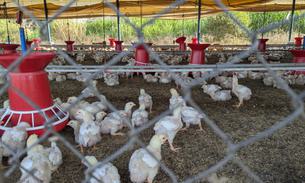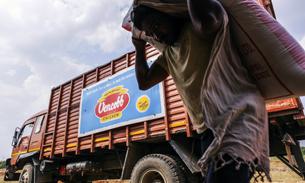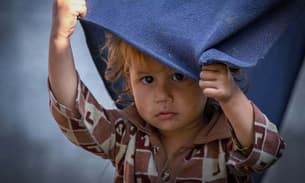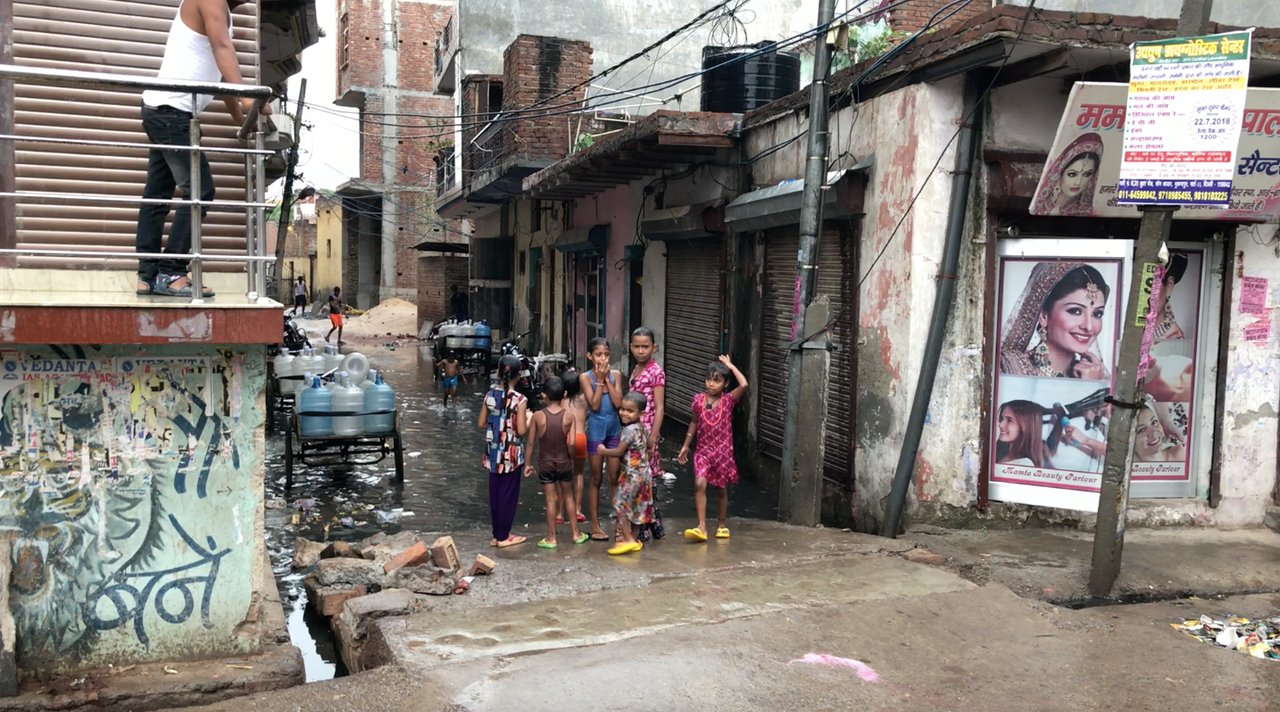
“Global shame”: Children hit the hardest by tuberculosis crisis
More than two years ago Raman Khumar Jha, who is 15, was playing with friends near his home in Burari, an urban slum in east Delhi, when he coughed and noticed there was blood in his phlegm. He felt worried and wanted to tell his parents but they weren’t home. “I went to my friend’s place,” he said. “But they did not believe that I could have blood in sputum. They were not taking it seriously.” Finally, when his mother got home, she took him to hospital.
He was diagnosed with tuberculosis. This infectious airborne disease is now associated with Victorian-era novels rather than the modern day in prosperous countries, but it is still rife in India. It ravages the lungs and can kill unless it is treated. Raman was given a cocktail of four antibiotics for six months. A combination of the disease and side effects of the drugs made him feel dizzy, nauseous and weak. After six months he was no better and was still coughing up blood, so they continued the medication for another three months. The bleeding continued, so he was sent to another clinic for tests.
It was discovered he had multidrug resistant TB. This meant two of the drugs he had been given for nine months had been ineffective, so he was still ill with the infection. He would need treatment for another two years, comprising of six months of injections and a different mix of antibiotics. If taken systematically, they can cure the disease. However, the drugs he needed can have severe side effects, including deafness, blindness, seizures and psychosis.
This long, difficult regime of drugs, which leaves children weak, sometimes deaf, and plunges families into poverty because treatment is costly, is becoming more common in India as cases of drug resistant TB continue to rise. Less than half of people in India with MDR TB, the type which Raman has, are cured. An even more deadly form of the disease exists, which is known as extensively drug resistant TB (XDR TB). People with this type have only a one in three chance of being cured. These rates are much lower than for drug sensitive TB. “It’s absolutely unacceptable,” said Dr Jennifer Furin, a practising doctor and Lecturer on Global Health and Social Medicine at Harvard Medical School.
The rise of drug resistant TB is creating new challenges, especially for children, who are much more vulnerable to the disease and for whom the effects and side effects of treatment are greater. Experts warn that drug resistance threatens to hamper the gains made in controlling the disease in India and, in effect, could sentence another generation of children to years of debilitating treatment. Global travel also means that drug resistant TB spreads all over the world.
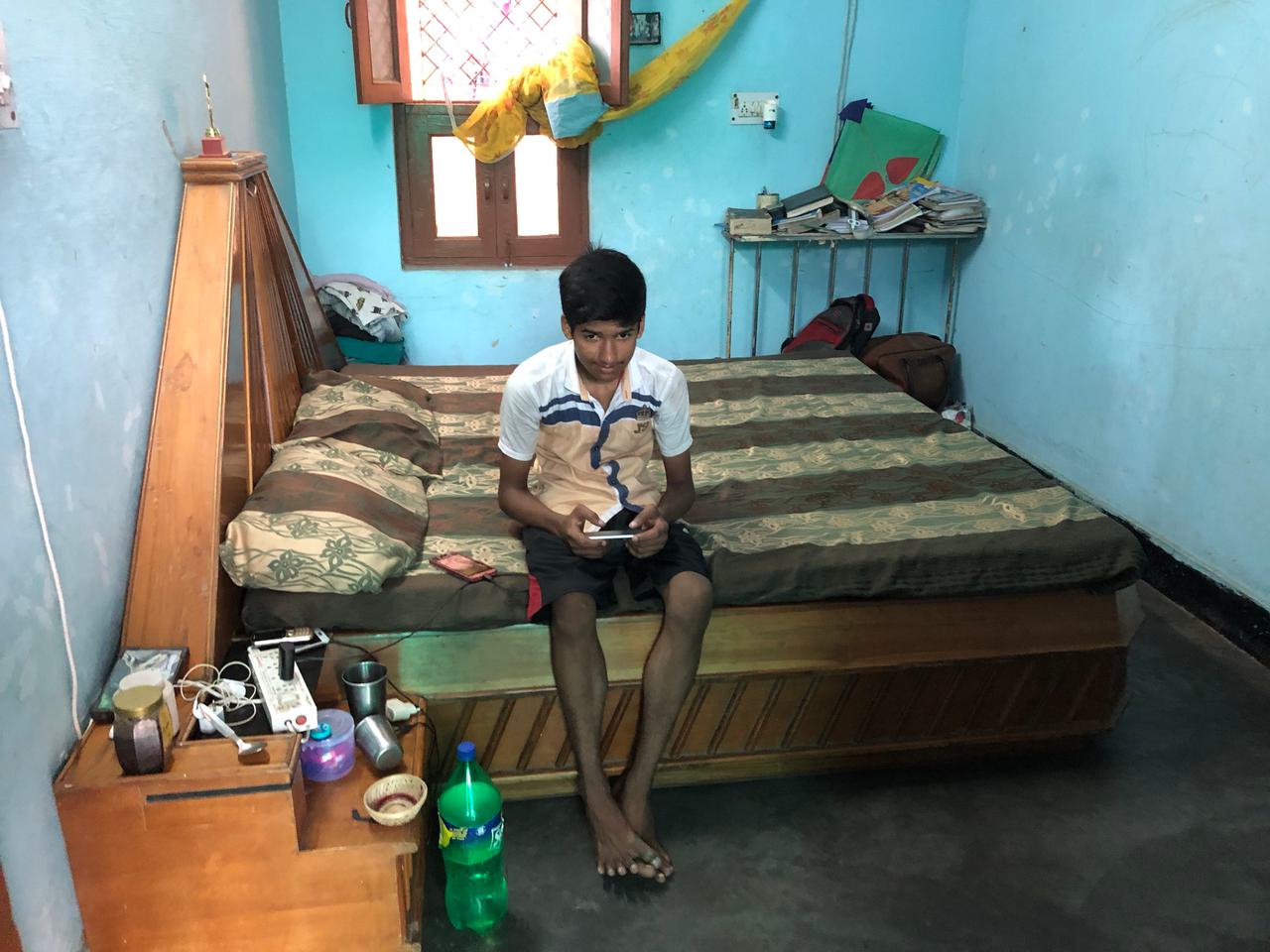
Children with MDR TB are poorly served in India and around the world, said Dr Furin. “We do such a bad job for kids who are infected with and sick from MDR TB,” she said. “It’s a great global shame.”
Though it may not seem like it, Raman is lucky that his disease was diagnosed and treated. Around the world a million children under 15 suffer TB a year and 234,000 - nearly one in four - died in 2017, according to the World Health Organisation’s (WHO) latest figures. More than 96% of children who died from TB in 2015 were not receiving any treatment for their disease.
TB is known as a disease of poverty as people who are malnourished and living in crowded and unsanitary conditions with poor ventilation and little sunlight are more likely to catch the TB bacteria and pass it to their family. In India a quarter of the urban population lives in slums. MDR TB can develop when people are prescribed the wrong cocktail for their strain of TB, or they fail to take their medicines properly for the whole course. Children nearly all catch it from another person, usually a family member with the disease.
Raman lives in an urban slum known as Burari, east of Delhi. The streets are crowded and narrow with open drains, which flood with sewage water when it rains. There are houses with five people living in one room, and in one part of the slum two members of every family are being treated for TB, according to Jyoti Gupta, a counsellor for NGO TB Alert. Raman was told to mix his sputum with hot water in a steel box before throwing it into the drains, but not all patients do this, so the disease easily spreads.
The disease has devastating effects on children’s lives. The drugs prescribed for MDR TB have severe side effects including vision problems, seizures, vomiting, dizziness, hepatitis, nerve damage (causing weakness, numbness and pain), an under-active thyroid, epileptic seizures, anxiety, depression and psychosis. Around half of people taking the injectable drugs go deaf. “If you’re a three year old and you...lose your hearing on the injectables, your life is ruined, you don’t acquire language, you can’t go to school,” said Dr Furin.
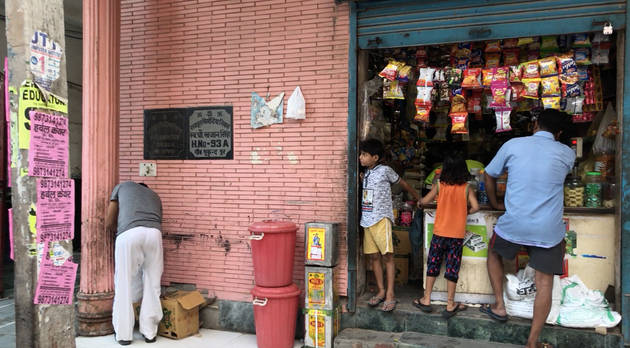 Children eating sweets in Burari, on the outskirts of Delhi
Children eating sweets in Burari, on the outskirts of Delhi
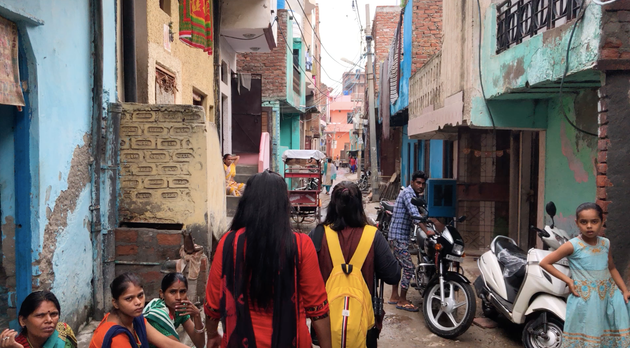 A busy shopping street in Burari
A busy shopping street in Burari
There is a lot of stigma attached to TB, and children face being shunned by other children or by parents who fear their own child might catch the disease. Children with TB often also feel isolated, as they are too weak to play with their peers. Sahil, 17, who also lives in Burari and contracted MDR TB two years ago, says his sister is now his only friend. In 2011 a 14-year-old girl from Kalapather, a village in West Bengal, set herself on fire as her health deteriorated due to TB. It is estimated hundreds of thousands of children have to leave school every year because their parents have TB. Like Raman, many have to leave school because they have the disease: they are too weak to study, or face discrimination.
The disease is a lot more difficult to diagnose in children than in adults, because they don’t always have typical symptoms of TB, like a cough. Young children don’t usually produce much sputum, which can be examined under a microscope or sent to a lab. If TB is suspected then in order to diagnose it doctors have to take liquid from the child’s stomach, which is invasive and not always accurate. Children are also less likely to develop lesions in the lungs which can be seen on X-rays. If children go undiagnosed and untreated they are more likely to develop severe forms of the disease, which spread to the brain, bones and joints.
It is extremely difficult to get children to swallow tablets or have an injection for a prolonged period. “Children are very reluctant to take injections for six months,” said Jyoti Gupta, a counsellor for NGO TB Alert. “They start crying and complain a lot.” While there are now flavoured formulations of TB drugs designed for children, some of which can be dissolved in water or mixed with food, none such exist for MDR TB. Health workers have to crush up pills, which means the dose isn’t exact. All these factors mean children miss doses, fail to take their medicines for the full course, or are treated with an imprecise dose, which fuels resistance and perpetuates the spread of drug resistant TB.
If a person is diagnosed with TB, a health worker should visit their house and test all the family members for TB, then treat children who have the disease. This has been shown to increase the number of people diagnosed by two-thirds in developing countries. Children who live in a house with someone with TB, particularly drug resistant TB, but don’t yet have the disease, will still carry the bacteria and should be given antibiotics to prevent them falling ill. This is not routinely done in India, despite the fact that it is very difficult to cure patients of the drug resistant forms. Doctors are unwilling to give healthy children antibiotics with adverse side effects. There has also been confusion over the best drug to use. Only 11% of children under five in India receive this preventative therapy, latest WHO figures show.
The International Union Against Tuberculosis and Lung Disease, a scientific group, said this is just one example of how children with TB are neglected, with policies prioritising treating adults who are more infectious because they cough up more phlegm. Paul Jensen, its Director of Policy and Strategy, said the neglect is an abuse of their human rights: “Their rights to health are being systematically violated by health systems all around the world.”
Two new drugs, bedaquiline and delamanid, have been approved to treat MDR TB, and are the first to have been developed in nearly 50 years. An important study found a three-fold reduction in deaths in adult patients receiving bedaquiline. The WHO has now recommended phasing out injectable drugs, which have severe side effects, in adults, and prescribing oral drugs, including bedaquiline, instead. As children were not included in the clinical trials for bedaquiline, there is no data on whether it is safe or the correct dose to give. WHO does not currently recommend giving bedaquiline to children. As a result they are still given the injectables.
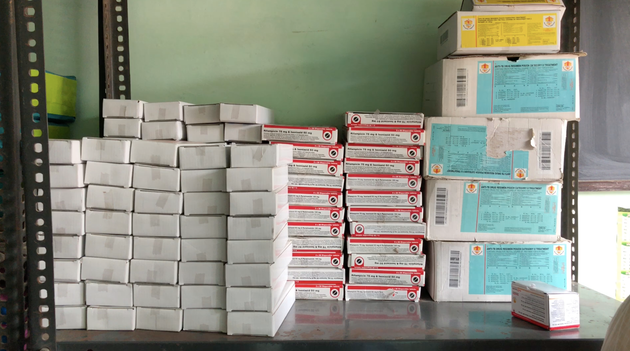 TB drugs await collection in a local health-centre in Burari, Delhi
TB drugs await collection in a local health-centre in Burari, Delhi
Dr Furin believes children with MDR TB should be given bedaquiline as they are at greater risk of the side effects of the older injectables, which were also never tested on children. “People are like ‘Oh we have to protect the children, we shouldn’t give them the new drugs,’” she said. “Then ironically you end up being stuck treating children with the old drugs that were never tested on children. People are so afraid of hurting the children they do things that make it worse for the children.”
Delamanid is the drug of choice for children with MDR TB. Yet within India it is only available in six government hospitals across seven states. Dr Furin believes this is a mistake, as Mumbai, the epicentre of MDR TB, will not get the drug when there are children there who need it. “Mumbai needs delamanid, it’s the drug of choice for children down to the age three years,” she said.
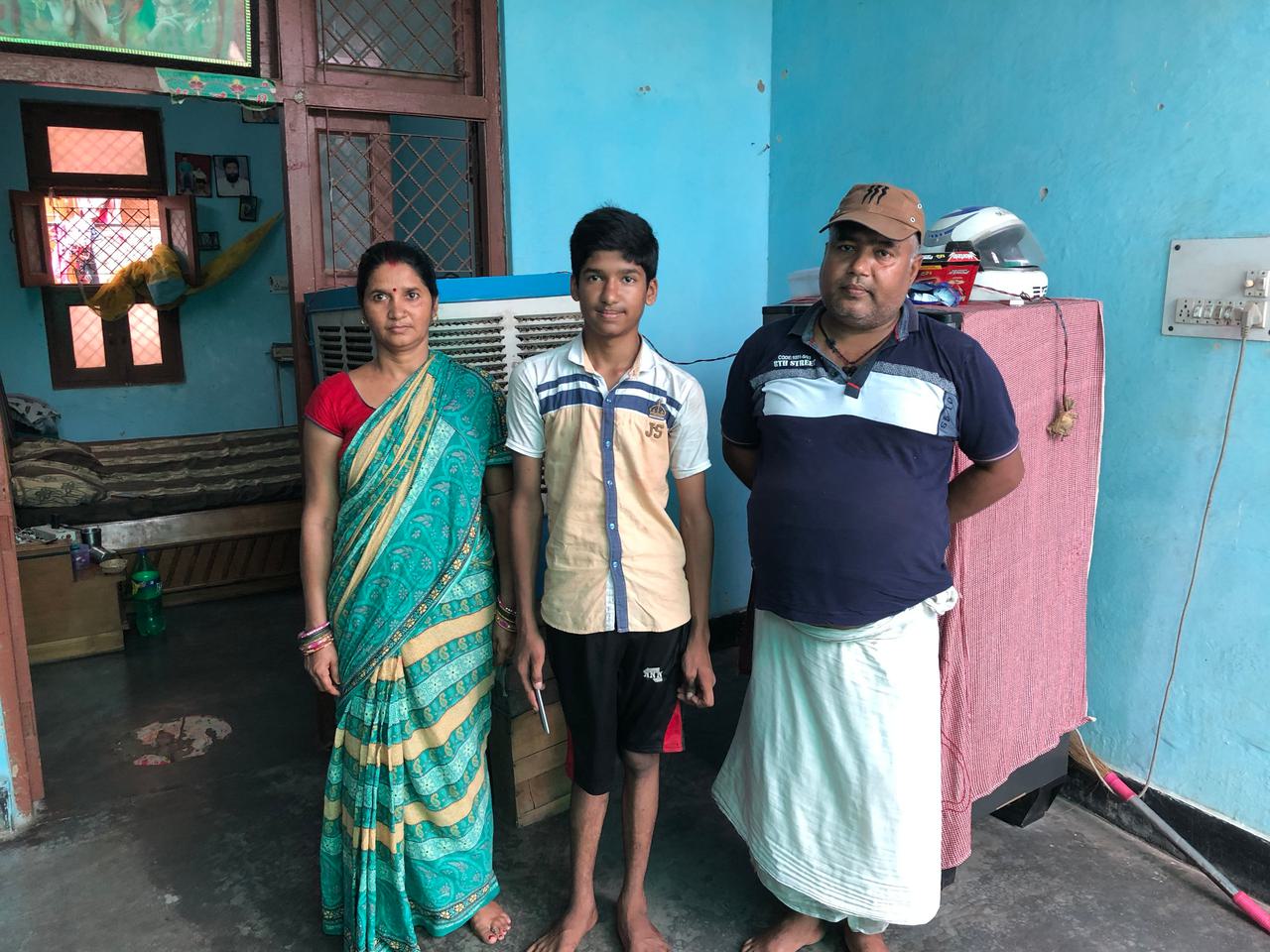
Raman’s father Santosh, 43, worked as a taxi driver, but he was injured in a car accident a few years ago. This means he can only work for up to six hours a day rather than the 14 he used to drive. The family’s income has dropped yet further, as they have to make sacrifices to pay for nutritious food to help Raman get better, and for trips to the hospital.
Raman's treatment will finally be over in Feburary 2019, and his family are praying that he will not relapse. He wants to be a science teacher when he grows up. Santosh wishes his son had been spared this illness, which has led to him being absent from school. “He is just a child,” he said, “This is a time when he should be playing around, when instead he is suffering so much because of this disease.”
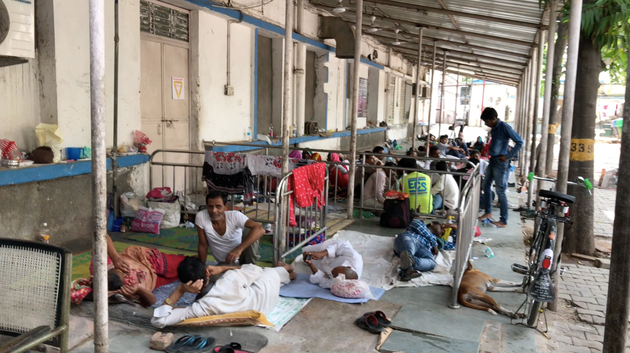 Patients await treatment at a Delhi health centre
Patients await treatment at a Delhi health centre
The visitor's story
My daughter was two and a half years old when we decided she and her elder brother should stay with her grandparents in Mumbai, to learn about Indian culture. We enrolled my daughter and her brother, who is two years her elder, in a daycare programme. We were very well aware of TB, so the week we landed in India we administered the BCG vaccine to both of them.
When I came to pick them up three months later, I noticed that she was feverish. We took her to a local paediatrician who gave her ibuprofen and reassured us that she would recover in time. Unfortunately her fever never came down, it kept getting worse.
We didn’t assume anything serious until we got back to the US. Then she started having very high fevers...We took her to her local paediatrician, she ran blood tests, urine tests, tests for common infections and nothing was detected. That’s when I decided to take her to the emergency room because I knew something was wrong. Her fevers were getting higher...she was losing weight.
At the hospital a chest X-ray found a spot on her lungs. They thought it was pneumonia, which is common in kids. They did not want to admit her, they wanted to give her oral antibiotics and discharge her. I pleaded with them and they finally relented.
She was admitted and they gave her intravenous antibiotics for regular pneumonia for four days. Her fever still didn’t go down... And that’s when I knew it was something serious like typhoid or TB.
I went to a [private] lab and got her blood checked, using a test for TB. It was positive. I let the physicians know as soon as I found this test was positive. The team...just said this is just a regular pneumonia, she’ll get better, give it some time. I was angry they were dismissive of the test.
I insisted she get a CAT scan on her chest. It’s not to be done lightly, given that it's radiation...it showed findings that were very suggestive of tuberculosis.
We were shocked and we were very concerned about our daughter. We knew what it implied if she did have TB; she would have to be quarantined. She would have to stay at home, it would be a big change in all our lives.
She was given antibiotics for TB and they took samples to be grown in a lab. Because she was not coughing, her sputum could not be tested. So they put a tube into her stomach and over three days [took] an early morning sample of her stomach fluids to test it for TB. This turned out to be the most crucial test because eight weeks later one of the samples grew a bacteria... she had extensively drug resistant TB. They were able to do further tests on the bacteria to find out which antibiotics it was sensitive to. In total it took 12 weeks to find out she had extensively drug resistant TB, even in a country like America.
She had a very poor prognosis. More than half of kids with this disease pass away. So we were scared we were going to lose our daughter.
The toughest thing was explaining it to both our kids. My daughter, in the first month of treatment, was quarantined even at home. She and I would spend most of our time in the basement and my wife and son would spend most of their time on the first floor. They both missed each other a lot. They asked “Why can’t we play with each other?” In the back of our minds we were always worried she could have transmitted it to her brother.
It was very nerve-wracking when she was put on medication. She had her intravenous drugs in the morning, then in the evening she would take her pills. Some were crushed, some mixed in chocolate pudding. So by the end of the whole ordeal she hated chocolate.
It wasn’t like there were alternative medications to try because her TB was extensively drug resistant. We had to maximise her chance of surviving this infection. Faced with that, we agreed she might have some permanent side effects. We had to face the reality she might lose her vision, her hearing, her balance, her kidneys. She has some skin discolouration now, but we have our daughter.
We never could be confident it was going well. TB is notorious for relapse, for developing resistance over time so even though initially you might respond to medications it can develop resistance over time. That’s why she was on five medications. Every time she falls sick we start worrying. We’ll always be haunted about that.
We didn’t tell anyone about her TB because we didn’t want other parents or kids to ostracise her. She didn’t leave the house for six months until the doctor was happy she wasn’t infectious. We sent a letter to pre-school from a doctor explaining her condition and that she was on treatment and wasn’t infectious.
She was not able to have any play dates, have friends come over. She did not celebrate her birthday for two years. We just bought a small cake at home and just did a small celebration. We had no social life for two years. We couldn’t travel because a nurse had to come to our home and observe us giving medication to our daughter. We just withdrew ourselves for two and a half years.
She has been incredibly lucky. In any other country it would have been very difficult to pull the coordinated treatment needed. There are lots of things you have to monitor for. We had a whole team rooting for her. It’s possible in resource rich countries; it's an incredible challenge to pull this off in the developing world.
Family identity withheld at their request.
Header picture, of children playing near dirty water in Burari, Delhi, and other photos, by Madlen Davies/the Bureau. Contact us for re-use. Translating by Mansi Sharma.


